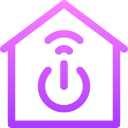
Comparing Voice-Activated Platforms: Choose the Assistant That Truly Fits Your Life
Selected theme: Comparing Voice-Activated Platforms. Explore how Alexa, Google Assistant, Siri, and others stack up on accuracy, privacy, ecosystems, and everyday usefulness. Join the conversation, share your experiences, and subscribe for fresh, hands-on comparisons.
Who’s Talking? The Voice Platform Landscape
The Big Three: Alexa, Google Assistant, and Siri
Alexa often leads on smart home breadth and third‑party integrations, Google Assistant excels at search and conversational follow‑ups, while Siri prioritizes privacy and deep device handoff on Apple hardware. Each excels in different daily contexts.
Challengers and Regionals
Samsung’s Bixby, regional options like Yandex Alice or Baidu’s DuerOS, and enterprise assistants broaden the picture. Their strengths often reflect local services, device ecosystems, and language priorities worth considering for specific households.
Where You’ll Meet Them
Smart speakers, phones, TVs, earbuds, cars, and even appliances expose different platform strengths. Compare response time in kitchens, microphone reach in living rooms, and reliability in noisy commutes to reveal real‑world differences that truly matter.
Understanding and Accuracy: Can They Really Hear You?
In a clattering kitchen test, far‑field mics and wake‑word sensitivity separated strong performers from pretenders. Assistants with superior beamforming and on‑device wake detection responded reliably without false triggers during sizzling pans and humming dishwashers.


Understanding and Accuracy: Can They Really Hear You?
Assistants vary at handling regional accents and switching languages mid‑sentence. Those trained on diverse datasets interpret intent more consistently, reducing frustrating repeats and misheard names. Share your accent experiences so others can gauge real inclusive performance.
Ecosystems and Smart Home: Who Plays Nicest?
Matter, Thread, and Legacy Bridges
Matter promises simpler, cross‑platform control, but real‑world support varies by hub and firmware. Assistants that manage both new standards and aging Zigbee bridges offer smoother upgrades, minimizing painful device migrations during smart home expansions.
Routines, Automations, and Scenes
From goodnight scenes to sunrise coffee, routine builders differ in flexibility and reliability. Look for conditionals, presence detection, and location triggers. The best assistants make complex logic approachable without drowning you in brittle, hard‑to‑debug steps.
A Stubborn Light Story
One living room lamp refused commands until grouped properly and named consistently across apps. Assistants that handle synonyms and device discovery gracefully spared renaming chaos. Clear guidance and smart defaults turned chaos into calm with fewer hiccups.


Privacy, Security, and Control: Your Data, Your Rules
Assistants increasingly process wake words and simple commands locally, reducing cloud exposure and latency. Prioritize platforms that keep quick actions on device while being transparent about when audio or transcripts leave your home network.
Privacy, Security, and Control: Your Data, Your Rules
Look for easy history review, bulk deletion, and clear retention timelines. Strong platforms provide readable dashboards, granular permissions, and per‑device controls. Transparency builds trust, especially when children or guests interact with shared household devices.

Skills, Actions, and Shortcuts
Each platform offers different invocation patterns and capabilities, from natural language intents to shortcut phrases. Consistent slot handling, robust error messages, and portable designs help teams ship reliable voice experiences across multiple ecosystems without constant rewrites.

Tooling, Testing, and Certification
Local emulators, analytics, and automated utterance tests save time. Certification processes vary widely; plan for round‑trips on privacy and invocation wording. Clear guidelines and sandbox environments reduce surprises and keep launches predictable under tighter deadlines.
Multilingual and Accessibility: Voices for Everyone
Beyond headline counts, depth matters. Local knowledge, high‑quality TTS, and regional providers elevate experiences. Assistants that blend strong translation with culturally relevant answers deliver better daily utility than mere checkbox language support claims.
Adjustable speech rate, visual captions, and alternative input methods expand access. Platforms that learn user‑specific pronunciation patterns reduce frustration. Inclusive design is a measurable advantage, not a bonus, because it directly improves comprehension and reliability.
Code‑switching across family members challenges wake word detection and NLU. Assistants that handle mixed queries without forcing manual language toggles feel natural. Share your multilingual routines so we can stress‑test scenarios that mirror real homes.



Conversational Reasoning and Personalization
Richer reasoning promises fewer rigid commands. Assistants that learn preferences and adapt phrasing feel more human. Guardrails must balance helpfulness with safety, ensuring personalization never compromises privacy, reliability, or clarity about data usage.
Multimodal Moments
Voice plus visuals is powerful. A spoken recipe with step cards, or a route with live detour suggestions, reduces cognitive load. Platforms that synchronize voice, touch, and glanceable context often deliver the smoothest, most trusted experiences.
How You Can Shape the Comparisons
Tell us your top test cases and we’ll include them in future head‑to‑heads. Subscribe, comment, and share logs of tricky commands so our comparisons reflect real life, not just lab‑friendly scenarios.
